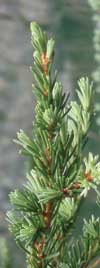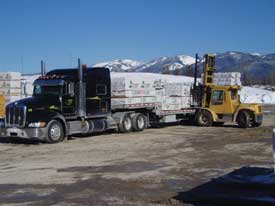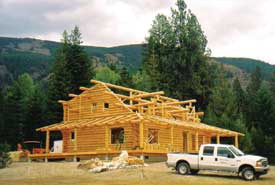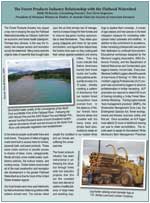Forest Products Industry
 |
The forest products industry contributes significantly to the economy of the Flathead Watershed. With 13 varieties of commercial tree species harvested from public and private lands in the watershed, local mills can produce a diverse array of products. Some products manufactured in the Flathead include logs for log homes, dimensional and specialty lumber, plywood, MDF (medium density fiberboard), and siding, trim, flooring, molding, and framing used in the building industry. A number of other products are made from the materials remaining from major wood products manufacturing, including paper, cardboard, and toothpaste.
Proactive forest management not only contributes to the economy, it also can help to maintain healthy forest ecosystems. Planting, thinning, and harvesting of forest vegetation promotes the health and safety of Flathead Watershed communities by reducing the risk of wildfires. Proper forest management also contributes to protecting the cultural integrity of the Flathead Watershed. The B.C. Ministry of Forests, the U.S. Forest Service, the Confederated Salish and Kootenai Tribes, Montana Department of Natural Resources and Conservation, private landowners, and citizens all play a significant role in contributing to the health of our forests. Cooperation among all parties is critical for maintaining productive forests and watershed health.
 |
| Figure 6.13: Well managed forest. Source: Holly McKenzie |
Growth in the watershed continues to create pressure for conversion of private forest lands into large real-estate development projects. In addition to losing forested land, this expansion of human development into forests and wildlands—known as the wildland-urban interface (WUI)—exposes both humans and wildlife to increased risks to health and safety. The further into these areas we develop, the more we facilitate contact with wildfires and native species such as bears, mountain lions, and wolves. Forest management practices that reduce these risks are essential in areas where public and private forest lands border private properties. Like farming, active forest management is based on growing a sustainable product. It requires expert foresters’ commitments and procedures and landowner cooperation to be successful.
 |
 |
| Figure 6.14: Loading wood products in the Flathead. Source: Holly McKenzie |
Figure 6.15: Log home by Montana Log Homes. Source: Holly McKenzie |
| Resources | |
| Canada’s Council of Forest Industries http://www.cofi.org/index.htm 604.684.0211 |
Montana Logging Association http://www.logging.org 406.752.3168 |
| Department of Natural Resources and Conservation (DNRC) http://dnrc.mt.gov |
Montana State University Extension Forestry http://www.cfc.umt.edu/extensionforestry 406.243.2773 |
| Flathead National Forest http://www.usda.gov/flathead 406.758.5204 |
Montana Wood Products Association http://www.montanaforests.com 406.443.1566 |
| Montana DNRC Forest Management http://dnrc.mt.gov/trust/FMB/Default.asp |
USDA Forest Service Northern Region http://www.fs.usda.gov/r1 406.329.3511 |


